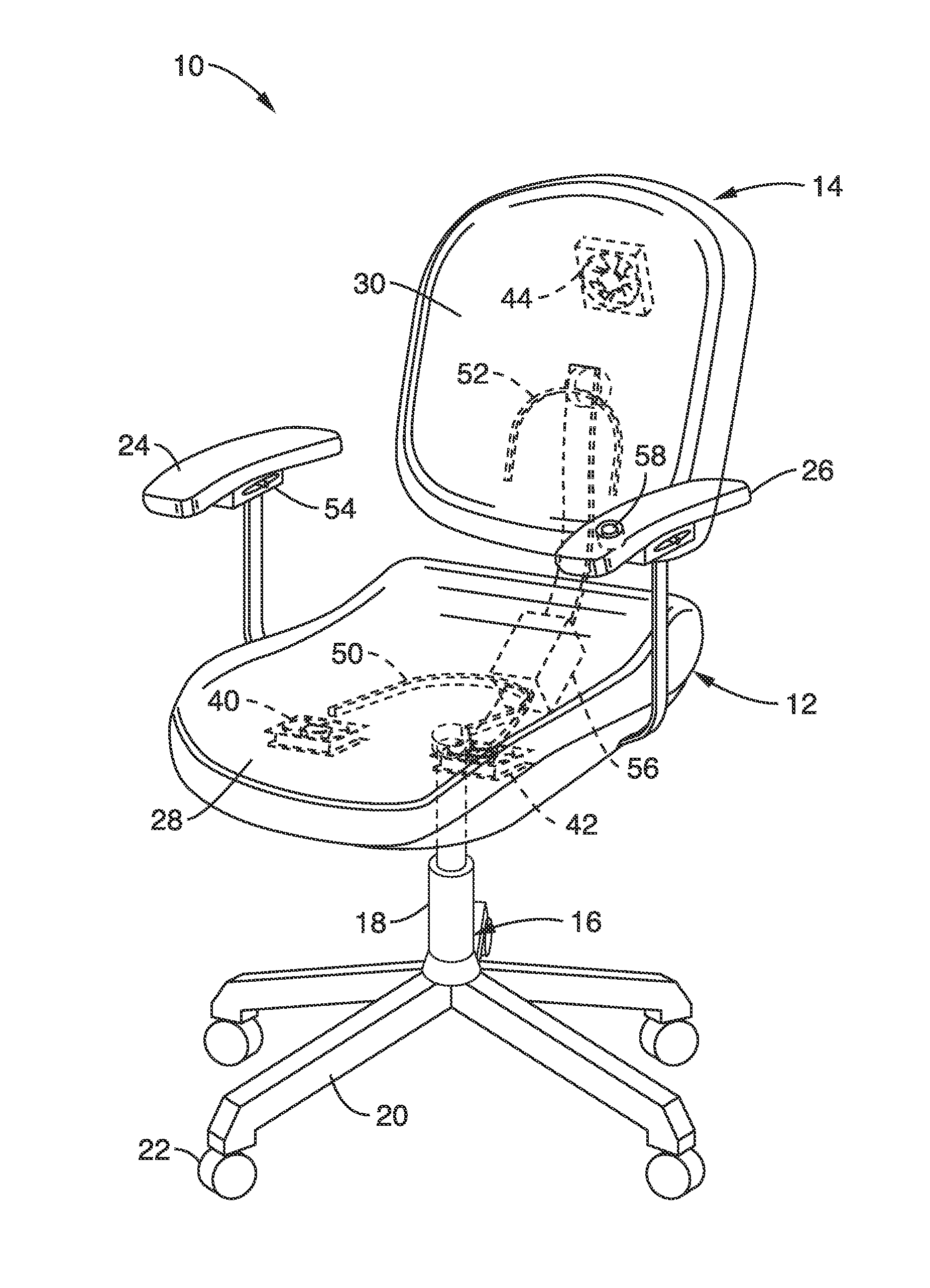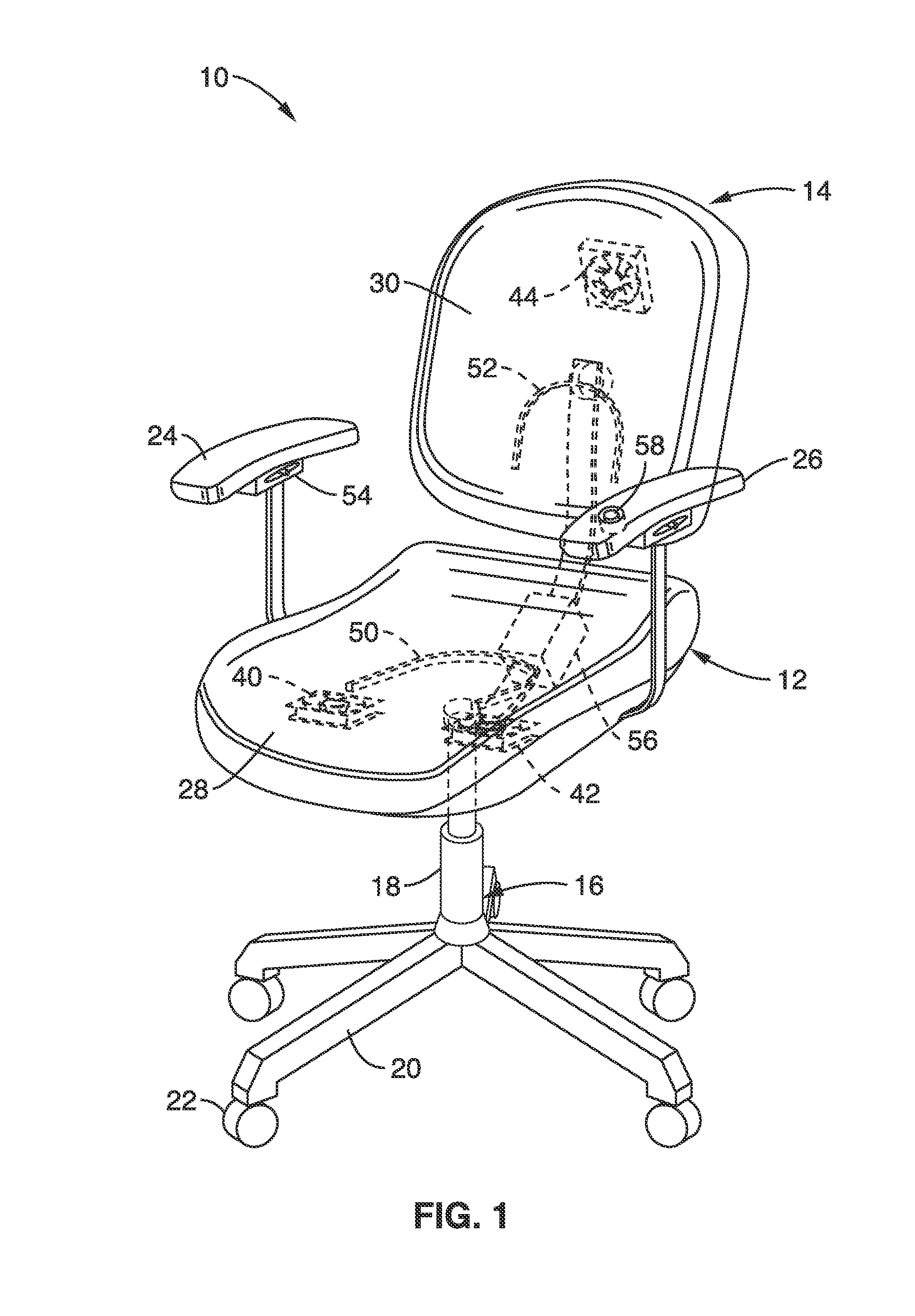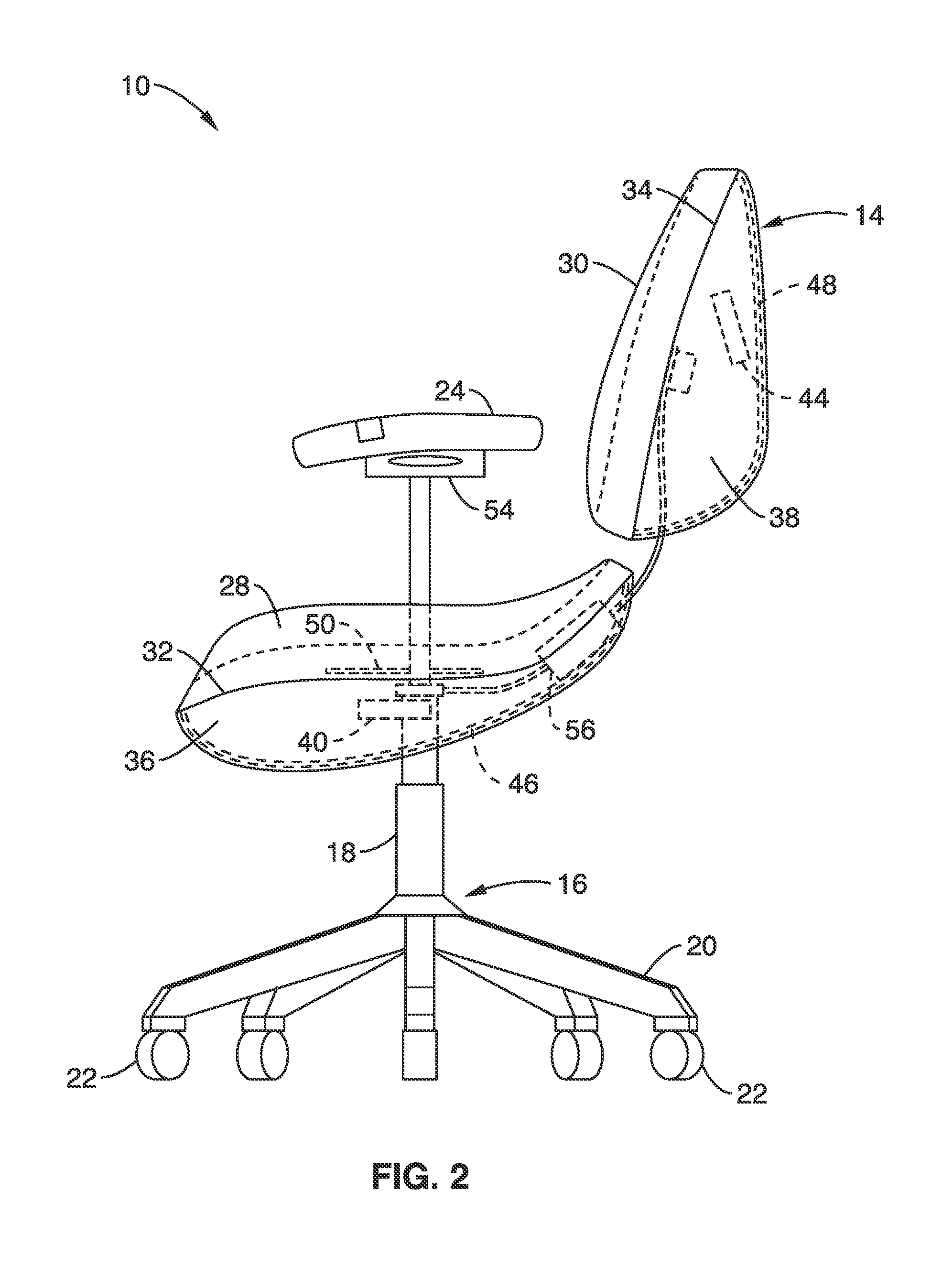Heated and cooled chair apparatus
a chair and apparatus technology, applied in the field of chairs, can solve the problems of reducing the heat transfer efficiency of the body affecting the efficiency of heat transfer to or from the chair, so as to improve the efficiency of the chair heating system, reduce radiant heat loss, and improve the heating and cooling effect of the sea
- Summary
- Abstract
- Description
- Claims
- Application Information
AI Technical Summary
Benefits of technology
Problems solved by technology
Method used
Image
Examples
Embodiment Construction
[0047]Referring more specifically to the drawings, for illustrative purposes an embodiment of a heated and cooled chair for energy efficient personal comfort of the present invention is depicted generally in FIG. 1 through FIG. 4. It will be appreciated that the system may vary as to the elements, specific steps and sequence and the apparatus structure may vary as to structural details, without departing from the basic concepts as disclosed herein.
[0048]Turning now to FIG. 1 through FIG. 3, an embodiment of a chair 10 with an occupant heating and cooling system is schematically shown. The chair 10 used to illustrate the invention is a typical office desk chair with a generally horizontal seat 12 and a generally vertical back rest 14 that are mounted to a base 16. The seat 12 and the back rest 14 can be separate features as shown in FIG. 1 through FIG. 3 or the seat and the back rest can be joined together on one edge. Although a desk chair design is used to illustrate the invention,...
PUM
 Login to View More
Login to View More Abstract
Description
Claims
Application Information
 Login to View More
Login to View More - R&D
- Intellectual Property
- Life Sciences
- Materials
- Tech Scout
- Unparalleled Data Quality
- Higher Quality Content
- 60% Fewer Hallucinations
Browse by: Latest US Patents, China's latest patents, Technical Efficacy Thesaurus, Application Domain, Technology Topic, Popular Technical Reports.
© 2025 PatSnap. All rights reserved.Legal|Privacy policy|Modern Slavery Act Transparency Statement|Sitemap|About US| Contact US: help@patsnap.com



